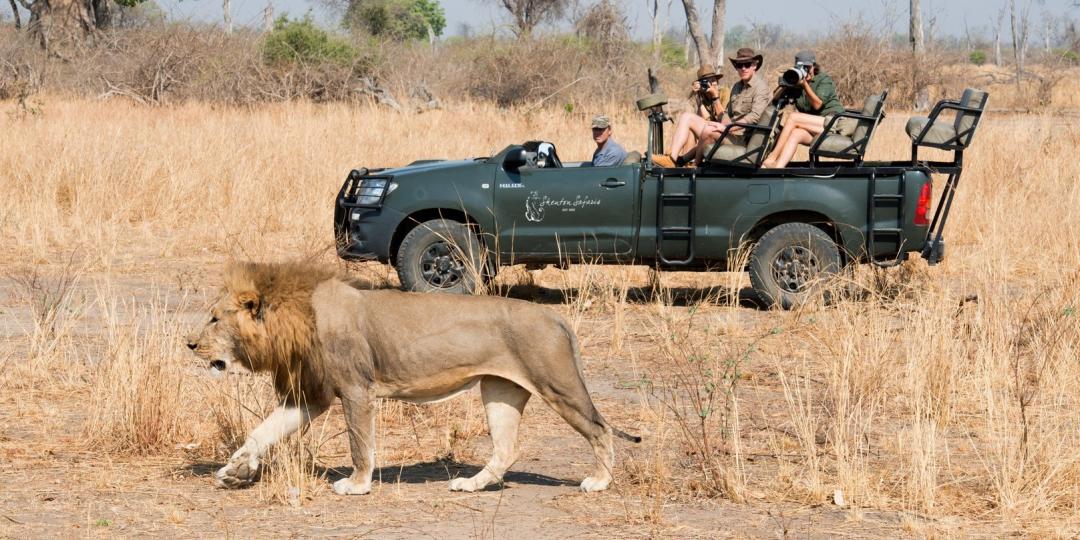Photographic safaris continue to be a major drawcard for tourism to Africa, and rapid advances in camera and mobile phone technology have opened up a new world of opportunity for safari-goers and operators alike.
“Going off on safari in search of Africa’s large potentially dangerous animals is an exciting pastime all on its own. Witnessing exciting interactions is one thing, but to capture them with the enormous detail and timing that modern cameras allow is extremely satisfying,” said South African wildlife photography pioneer and Safari for Real Owner Lex Hes
Hes added that, in the early days of wildlife tourism, there were very few tourists who came on safari with the main aim of taking photographs. The development of camera technology made it easier to take good photographs and this, together with coffee table book photography, brought more photographers on safaris, all wanting to emulate the stunning photos snapped in Africa.
“A whole new segment of wildlife tourism started up with professional photographers taking learner photographers out on safaris to teach them how to get better pictures. Today’s digital cameras with various auto options, including mind-blowingly fast auto-focus and the ability to see pictures immediately after taking them, has led to a massive numbers of photographers all taking incredibly good photographs,” said Hes.
‘Dramatic increase’ in demand
South Africa's largest private reserve, Tswalu Kalahari Game Reserve, has recently introduced a photographic safari experience for guests with a special interest in wildlife photography, guided by dedicated specialist photographic guide, Trevor Kleyn.
“We have seen a dramatic increase in demand for our photographic safaris, where both the novice and professional are looking for that sense of space and time, supported by the absolute flexibility of the safari plan,” said Russel Binks, Executive Global Sales, Marketing and PR for Tswalu Kalahari Reserve.
“We tend to see groups who specialise; expert photographers traveling solo; and couples where one person may be an avid photographer and the other just wants to learn. So there are opportunities for guests of all levels of photographic ability to refine their skills on a photographic safari,” Binks added.
Tswalu also offers private photographic tuition for all levels, guided by Kleyn, from novices to experienced photographers.
The private photographic tuition includes two hours of informal classroom-style tuition to enhance wildlife photography skills, as well as editing and processing in Adobe Lightroom at the Motse Camp’s fully equipped Photographic Studio.

Wildlife hides
Wildlife hides are another big drawcard for photographic safari enthusiasts.
Shenton Safaris, located deep within the South Luangwa National Park in Zambia, offers wildlife hides that are regularly used by National Geographic, BBC and Discovery Channel for numerous photographic shoots and the making of wildlife documentaries.
Alexandra Jonker, Sales and Marketing Manager at Shenton Safaris, added that with advances in mobile phone technology, the company is seeing more ‘amateur’ photographers simply using their phones to capture exceptional shots and footage.
Shenton Safaris, with its Kaingo Camp and Mwamba Bush Camp, offers five specialised hides, with additional mobile hides.
“The hides target different aspects of the South Luangwa environment, with mobile hides to take advantage of unique wildlife moments, such as the Carmine Bee-Eater migration, and fixed photographic hides such as Hippo Hide, Last Waterhole Hide and Elephant Hide.
“Many guests will forego a drive or walk to remain at the hides and enjoy the full immersion of the Shenton Safaris Hide experience. The hides are hugely popular with photographers and wildlife enthusiasts alike,” said Jonker.

Custom safari vehicles
To meet the demands of guests, safari companies have started to retrofit their vehicles specifically for photography.
“A maximum of four guests (more on request) share custom-built, open game viewers. Photographers of all levels will appreciate the camera rests, super-clamp stabilisers, dust covers and guide expertise in positioning, timing and helping guests make the most of all photo opportunities,” said Jonker.
Tswalu’s vehicles are also custom-built for this purpose.
“A rotating swivel seat allows for an uninterrupted, 270-degree arc and can be locked into position. The seat is fitted with a stabilising arm and platform for taking sharp, steady images, even with a long lens. There are also brackets, slings and bean bags to assist with stability and sharpness. Hatches that cut into the sides of the vehicle allow the photographer to lie flat on a firm mattress to photograph animals at eye level,” said Binks.























